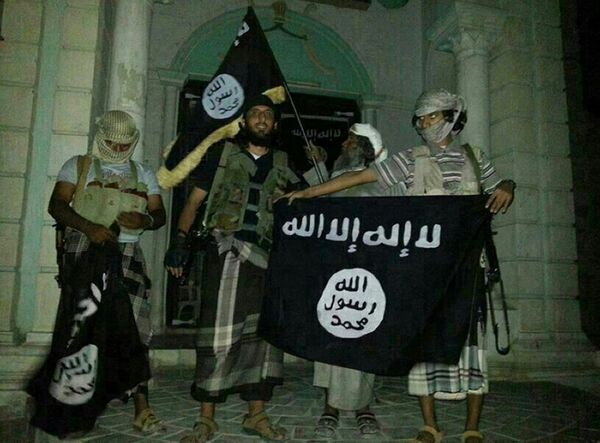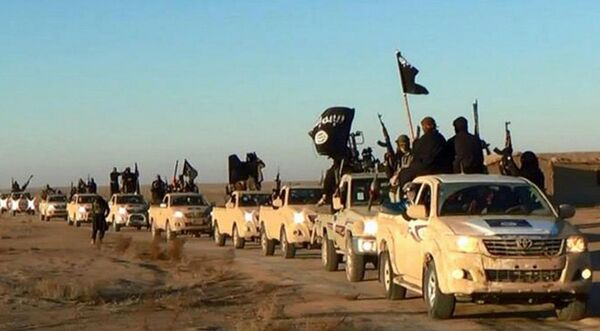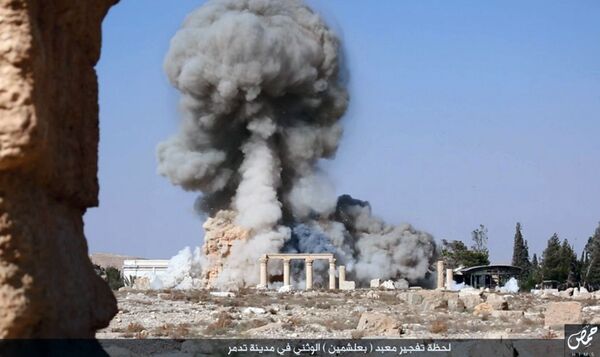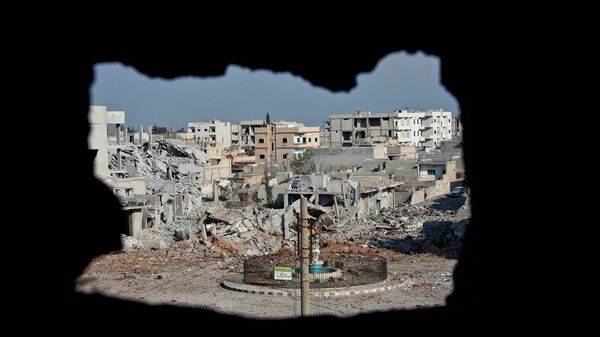Ten years ago, Jordanian journalist Fouad Hussein wrote a book on al-Qaeda's strategy for the next two decades. It was based on information provided by some of the most sought-after terrorists of al-Qaeda’s inner circle, such as Abu Musab al-Zarqawi and Seif al-Adl.
Al-Zarqawi was the Jordanian-born founder of al-Qaeda in Iraq — an offshoot of the larger terror organization — who wanted to establish a Sunni caliphate, or religious state, in the country after the 2003 US invasion.

The man was responsible for a series of bombings, beheadings, and attacks during the Iraq War and was eventually killed in a targeted US airstrike in June 2006.
Seif al-Adl is an Egyptian former military colonel, explosives expert, and a high-ranking member of al-Qaeda who is still at large. The Egyptian terrorist is suspected of taking part in the attacks on the American Embassies in Dar es Salaam and Nairobi in 1998, and has a ransom of $5 million on his head from the FBI. Secret services suspect that al-Adl is now in Iran.

When Fouad Hussein was a political prisoner, he successfully made contacts with al-Zarqawi and many more of the network’s leaders, who shared their plan of action for the next two decades.
Back in 2005 Fouad Hussein sat down with the German magazine Der Spiegel to elaborate on the strategy, which the magazine then described as “both frightening and absurd, a lunatic plan conceived by fanatics who live in their own world, but who continually manage to break into the real world with their brutal acts of violence”.
Let’s have a look at to what extent it has really worked out.

An Islamic Caliphate in Seven Steps
In seven phases, the terror network hoped to establish an Islamic caliphate “which the West will then be too weak to fight”.
The First Phase, Known as "the awakening" had by that time already been carried out and was supposed to have lasted from 2000 to 2003, or more precisely from the terrorist attacks of September 11, 2001 in New York and Washington to the fall of Baghdad in 2003.
The aim of the 9/11 attacks was to provoke the US into declaring war on the Islamic world and thereby "awaken" Muslims.
"The first phase was judged by the strategists and masterminds behind al-Qaeda as very successful," wrote Hussein. "The battlefield was opened up and the Americans and their allies became a closer and easier target."

The Second Phase, "Opening Eyes", was aimed at making “the Western conspiracy aware of the Islamic community" and was supposed to last until 2006.
This was a phase in which al-Qaeda wanted its organization to develop into a movement.
The network was banking on recruiting young men during that period. Iraq was supposed to become the center for all global operations, with an "army" set up there and bases established in other Arabic states.

The Third Phase, "Arising and Standing Up" was supposed to be focused on Syria and should have lasted from 2007 to 2010.
The aim was to make the terrorist group become a “recognized organization”.
The next four stages had no titles.
The Fourth Phase, between 2010 and 2013, was aimed at “bringing about the collapse of the hated Arabic governments.”
It was estimated that "the creeping loss of the regimes' power will lead to a steady growth in strength within al-Qaeda."
At the same time attacks were supposed to be carried out against oil suppliers and the US economy, which was supposed to be targeted with the use of cyber terrorism.

The Fifth Phase, between 2013 and 2016, is the point at which an Islamic state, or caliphate, can be declared.
The plan said that by this time, “Western influence in the Islamic world will be so reduced and Israel weakened so much, that resistance will not be feared.”
Al-Qaeda hoped that by then the Islamic state would be able to bring about a new world order.
The Sixth Phase, from 2016 onwards, would be a period of "total confrontation."
As soon as the caliphate was declared, the "Islamic army" could instigate the "fight between the believers and the non-believers" which had so often been predicted by Osama bin Laden.
And, finally, the Seventh Phase, described as "definitive victory."
“The rest of the world will be so beaten down by the 'one-and-a-half billion Muslims,' the caliphate will undoubtedly succeed”.

This phase should be completed by 2020, although the war shouldn't last longer than two years.
The author, Spiegel then said, obviously believed that this seven-point plan could well become the guiding principle for a whole range of al-Qaeda fighters.
The outlet, however, provided its own appraisal of the master plan.
“There is no way the scenario he depicts can be seen as a plan which al-Qaeda can follow step by step. The terrorist network just doesn't work like that anymore.”
“The significance of the central leadership has diminished and its direct commands have lost a great deal of importance.”

“The supposed master plan for the years 2000 to 2020 reads in parts more like a group of ideas cobbled together in retrospect, than something planned and presented in advance.”
“And not to mention the terrorist agenda is simply unworkable: the idea that al-Qaeda could set up a caliphate in the entire Islamic world is absurd.”
“The 20-year plan is based mainly on religious ideas. It hardly has anything to do with reality — especially phases four to seven.”
However, in the aftermath of the wars in Libya, Iraq and Syria and with the global war against the Islamic State in the Middle East in mind, one can only draw the conclusion that the group has had some success in meeting its goals, at least in part.





